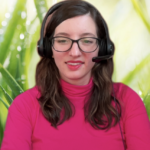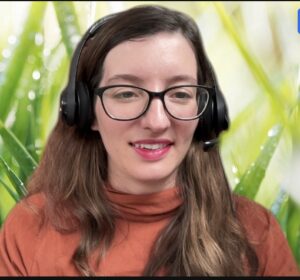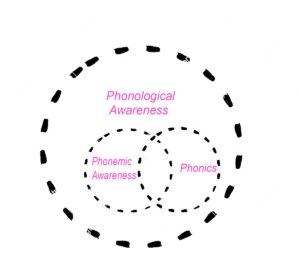Wondering what the difference is between rime vs. rhyme? The short answer is: Rimes are about spelling, but rhymes are about sounds.
Just remember, The Cat in the Hat utilizes Rimes! In the story, the rimes are: cat and hat. The Cat in the Hat also utilizes rhymes. In the story, the rhymes are cat and hat. However, the words “ray” and “sleigh” are rhymes, but they are not rimes.
Is every rime also a rhyme?
Yes! Similar to the manner in which every square is a rectangle but not every rectangle is a square, every rime is a rhyme but not every rhyme is a rime.
Huh?! What is the difference between rimes and rhymes, again?!
Ok, I know this can be a bit confusing. So, let’s learn more about what the terms “rime” and “rhyme” mean for teaching ESL, ELL.
Rimes follow after onsets and sound the same (rhyme) and they also have the same spelling pattern.
Rhymes come after onsets and sound the same, but they don’t have the same spelling pattern. So, you can see why this might be confusing to an English language learner.
For beginner ELL, it helps to stick to rimes and steer clear of rhyming words that aren’t rimes. Remember, you want to teach basic spelling patterns without confusing your student.
Why are Rimes so important?
Identifying rime is a crucial part of word study. Help students identify rimes by pointing out the spelling patterns that sound the same, and identify which ones simply rhyme when you hear them, and which ones have matching rimes when you write them.
This post has a great detailed breakdown of the different theorists that use each term. The easiest way to remember the difference between the terms rime vs. rhyme is this:
” the words “pear” and “care”? These words rhyme, that is, they sound identical after the onset, but they do not rime. “
A rime has the same spelling pattern after the onset: such as “cat” and “hat.” A rime house might be cat: hat, mat, rat, vat. A “rhyme” could be cat, blaht or blatt. However, those are not “rimes.”
Quick Notes on Rimes
Rimes will rhyme. 🙂
Not all rimes come at the end of a word. Words with multiple syllables have multiple rimes.
Just as rhyme and rime sound the same, their different spelling pattern means they are NOT rimes 🙂 They rhyme but they are not rimes.
FYI did you know that “rime” can also mean snow or ice over trees and grass when it makes an opaque coating?
What are onsets?
The “onset” is the initial phonological unit of any word (e.g. c in cat) and the term “rime” refers to the string of letters that follow, usually a vowel and final consonants (e.g. at in cat)
Rime vs. Rhyme: Why do we teach them?
Another big difference when thinking of rime vs. rhyme is that rhymes are fun ways to teach listening skills but rimes are especially beneficial to help ELL students learn to decode. Recognizing rimes help students learn to read. Rimes and onsets help kids decode new words, while rhymes…less do.
Repeating onsets and rimes can help kids recognize common patterns in words. This can help students learn to read and spell.
Decoding Strategies with Rimes
Here are some great strategies to teach kids using onsets and rimes.
- Rime Houses
- Onset and Rime Tiles
Fun fact:
Rime and rhyme are homophones because the words have different meanings but we pronounce them the same. Rime and Rhyme also rhyme! However, the words are not a rime.
Bottom Line: Rimes have the same spelling and they sound the same. Rhymes sound the same but their spelling can differ. Rhymes sound nice, but teaching rimes is especially crucial to ELL because it helps them decode words. Rime activities are an important part of an ESL curriculum for early readers.
Books with rimes & rhymes
Here are some classic and popular books known for their excellent use of rimes and rhymes. They are classics of early reading development:
- “Green Eggs and Ham” by Dr. Seuss – This is a classic that features playful rhymes and repetitive text.
- “The Cat in the Hat” by Dr. Seuss – Another Dr. Seuss gem filled with fun rimes (that rhyme). It will encourage children to learn new words.
- “Chicka Chicka Boom Boom” by Bill Martin Jr. and John Archambault – This rhythmic alphabet book helps children learn the letters and their sounds in a lively way.
- “Brown Bear, Brown Bear, What Do You See?” by Bill Martin Jr. and Eric Carle – With its colorful illustrations and rhythmic text, this book introduces animals and colors while incorporating rhyming patterns.
- “Sheep in a Jeep” by Nancy Shaw – This humorous book features simple rimes and rhymes. The repetition will help students learn to read as sheep take a wild ride in their jeep.
- “Fox in Socks” by Dr. Seuss – A tongue-twisting book that challenges children with intricate rhymes that are NOT rimes. Fox and socks are words that rhyme but are not rimes. So, keep this in mind.
- “Each Peach Pear Plum” by Allan Ahlberg and Janet Ahlberg – This interactive book combines rhymes with the challenge of finding characters hidden in the illustrations.
- “Dr. Seuss’s ABC” by Dr. Seuss – An alphabet book that uses amusing rhymes to teach the letters and corresponding sounds.
- “Hairy Maclary from Donaldson’s Dairy” by Lynley Dodd – A delightful rhyming book that follows the adventures of Hairy Maclary and his friends.
- “Room on the Broom” by Julia Donaldson and Axel Scheffler – A captivating tale of a friendly witch and her animal companions. It has engaging rimes throughout.
These books not only make reading enjoyable for children but also aid in language development, phonemic awareness, and vocabulary expansion. The rhythmic patterns and repetition in these stories can help children remember words and sounds more easily, making them valuable tools for early literacy development.
Here are some related posts.













